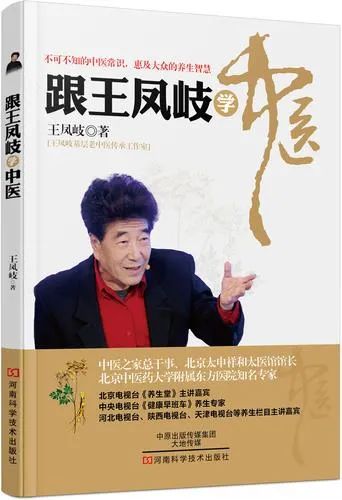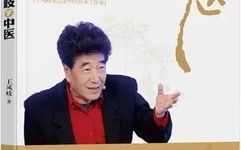The disciple asked: Master, you have taught us the four diagnostic methods in Traditional Chinese Medicine (TCM), so how should we differentiate syndromes and diseases?
The master replied: Today I will begin to discuss the syndrome differentiation methods in TCM.
Traditionally, TCM focused on treatment methods, but today I will categorize it into three methods: first is diagnosis, which includes the four examinations of observation, listening, inquiry, and palpation; second is the method of symptom differentiation; and finally, I will discuss specific treatment methods. This may provide a clearer structure: diagnosing diseases, differentiating syndromes, and treating diseases.
There are many methods of syndrome differentiation in TCM, and the following are commonly used.

The Eight Principles of Syndrome Differentiation

The Eight Principles of Syndrome Differentiation are the most commonly used and applicable to all diseases.
The Eight Principles refer to Yin and Yang, Exterior and Interior, Cold and Heat, and Deficiency and Excess.
Yin and Yang serve as the overarching principle, while Exterior and Interior, Cold and Heat, and Deficiency and Excess are also known as the Six Transformations. The signs and symptoms of the disease, along with the changes in the balance of Zheng (correct) and Xie (evil), are observed according to the Eight Principles, allowing for analysis and summarization to arrive at a diagnostic conclusion and subsequent treatment.
Exterior and Interior refer to the location of the disease; the exterior pertains to the outside, while the interior pertains to the inside. In the human body, the exterior refers to the surface, including the skin and muscles, and often indicates external pathogens like colds; the interior refers to the internal organs, including the Zang (organs), Fu (hollow organs), and meridians. Therefore, symptoms such as chills, fever, headache, stiff neck, body aches, and limb soreness, with or without sweating, belong to the exterior and are termed Exterior Syndrome. If symptoms like confusion, irritability, thirst, chest tightness, vomiting, diarrhea, abdominal pain, lower back soreness, and insomnia occur, they belong to the interior and are termed Interior Syndrome. Symptoms characterized by excess and strength are termed Excess Syndrome, while those characterized by deficiency and weakness are termed Deficiency Syndrome.
Differentiating between Deficiency and Excess is the basis for attacking evil and supporting the correct. Pure Excess and pure Deficiency syndromes are relatively easy to differentiate and treat, but the key is to identify the complex interplay of Deficiency and Excess, which is very important.
For example, if the Zheng is strong and the Xie is excessive, the condition may still be salvageable; however, if the Zheng is deficient and the Xie is strong, even a mild illness can be difficult to treat. Throughout the course of each illness, the phenomenon of Zheng and Xie mutually influencing each other often occurs, necessitating attention to the presence of Deficiency within Excess and Excess within Deficiency, as well as the various changes in the proportions of Deficiency and Excess, allowing for timely adjustments to our treatment methods.
For instance, an external invasion of Wind-Cold presents with chills and fever, and a floating and tight pulse, indicating an Exterior Excess Syndrome. If sweating occurs and the body temperature suddenly drops, leading to severe chills, this indicates a transition to an Interior Deficiency syndrome; or in the case of a febrile disease with a dry and rough tongue coating, indicating a deficiency of body fluids, or a bright red tongue with no coating indicating that Yin has been damaged by evil heat, this is a Deficiency Syndrome. In such cases, it is important not to simply reduce the fever but to use methods to generate fluids and replenish the body while also addressing the fever.
In fact, Exterior and Interior, Cold and Heat, Deficiency and Excess are merely methods of symptom categorization. Viewing a single symptom in isolation is meaningless, as each symptom can manifest in both aspects. For example, an Exterior Syndrome may present with a fear of cold, while an Interior Syndrome may also present with a fear of cold; a Deficiency Syndrome may have a fear of cold, and an Excess Syndrome may also have a fear of cold; Cold Syndromes may present with a fear of cold, and Heat Syndromes may also present with a fear of cold. Which type does it belong to? It is necessary to combine various symptoms to make a determination. Therefore, analyzing many symptoms and relating their nature together forms a syndrome complex. It is particularly important to distinguish the false appearances of symptoms and to clearly observe the essence of the disease comprehensively.
In summary, the Eight Principles of Syndrome Differentiation encompass the location of the disease (Exterior or Interior), the nature of the disease (Cold or Heat), and the comparison of Zheng and Xie (Deficiency or Excess). The ultimate goal of syndrome differentiation is treatment. Thus, differentiating between Exterior and Interior can determine whether to induce sweating or to purge; differentiating between Cold and Heat can determine whether to use warming or cooling methods; and differentiating between Deficiency and Excess can determine whether to tonify or drain. Knowing only these is still far from sufficient.
Methods of inducing sweating can also be categorized into warming and cooling types, and purging methods can be categorized into cooling, warming, and moistening types. Even the same treatment method can vary in dosage, so only with accurate differentiation can correct treatment be applied, leading to better therapeutic outcomes. Therefore, the theory of syndrome differentiation and treatment is the core of TCM practice. Next, I will introduce another method of syndrome differentiation.
Any invasion of the six excesses of Wind, Cold, Summer Heat, Dampness, Dryness, and Fire into the human body first invades the exterior and meridians, collectively termed Exterior Syndrome.
Diseases caused by emotions such as joy, anger, worry, thought, sadness, fear, and shock, or by diet and overwork, are mostly internally generated, hence collectively termed Interior Syndrome.
This is an overview of differentiating between Exterior and Interior Syndromes. However, there are instances where an Exterior pathogen can transmit inward to the Zang-Fu organs, resulting in symptoms that become Interior Syndromes; there are also cases where an Exterior pathogen has transmitted inward but has not yet fully entered the interior, termed half Exterior and half Interior, where the Exterior syndrome persists while the Interior syndrome is also present; or when an Exterior pathogen enters the interior, the condition is more severe and adverse.
For example, in the “Shang Han Lun” (Treatise on Cold Damage), initial symptoms of chills and fever, and stiff neck pain, are indicative of the pathogen being in the exterior. If fever persists, with symptoms of high fever, thirst, irritability, delirium, or abdominal pain with constipation or diarrhea, it clearly indicates that the pathogen has entered the interior. Conversely, there are also cases where symptoms emerge from the interior to the exterior, indicating a lighter and more favorable condition, such as the initial appearance of rashes in measles, with fever and irritability, chest tightness, and cough, where the skin shows red rashes and overall symptoms lessen, indicating that the pathogen is emerging from the interior to the exterior, which is favorable. This illustrates that when recognizing Exterior and Interior, one should pay attention to the directional changes of transmission, whether they are favorable or adverse, to avoid misdiagnosis. It is essential to identify the location of the disease based on the Exterior and Interior.
Cold and Heat refer to the nature of the disease.
Cold symptoms include lack of thirst, preference for warm drinks, cold hands and feet, aversion to wind and cold, clear and prolonged urination, pale complexion, white and slippery tongue coating, and slow pulse.
Heat symptoms include fever, red and yellow urine, which may be related to fever or heat in the bladder. Therefore, in addition to general symptoms, one must also consider that Cold and Heat can manifest differently depending on their location.
For instance, Cold in the upper body often leads to symptoms like sour vomiting, clear water regurgitation, or indigestion with cold pain in the chest. Heat in the upper body often leads to symptoms like headache, red eyes, sore throat, swollen gums, and dry mouth with a preference for cold drinks. Cold in the lower body often leads to symptoms like abdominal pain with a preference for pressure, constipation, or dark and painful urination. These symptoms can manifest in the upper or lower body, or both can exhibit heat or cold, or there can be heat above and cold below, or cold above and heat below. A thorough analysis is necessary for effective treatment.
Deficiency and Excess refer to the aspects of Zheng Qi and Xie Qi.
Deficiency refers to Zheng Qi, while Excess refers to Xie Qi. If Zheng Qi is abundant, there is no distinction between Excess and Deficiency; if Xie Qi is diminished, there is no distinction between Deficiency and Zheng. Thus, the “Huang Di Nei Jing” (Yellow Emperor’s Inner Canon) states, “When Xie Qi is strong, it is Excess; when Zheng Qi is depleted, it is Deficiency.”
Deficiency Syndromes manifest as fatigue, low voice, shortness of breath, spontaneous sweating, night sweats, dizziness, palpitations, and a weak and thin pulse; Excess Syndromes manifest as excessive phlegm, chest and abdominal distension, constipation or foul-smelling diarrhea, and a rapid and slippery pulse with a thick and greasy tongue coating.
Generally, robust individuals with new illnesses tend to be Excess Syndromes, while weak individuals with chronic illnesses tend to be Deficiency Syndromes.
In general, conditions characterized by excess, solidity, and strength are termed Excess Syndromes, while those characterized by deficiency, decline, and relaxation are termed Deficiency Syndromes.
————-Excerpt from “Learning TCM with Professor Wang Fengqi”


